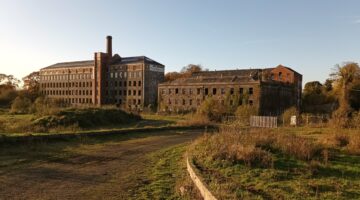It doesn’t seem many years since scientists were debating, if not whether climate was changing, certainly how fast it was changing and what was causing the change. But in a few short years the scientific evidence, corroborated by the frequency of exceptional events such as the Australian bushfires and the death of half a billion animals there last year, followed by heatwaves this year, has become undeniable.
When the MPs at Westminster declared a climate emergency last May and stated that the UK would be carbon neutral by 2050, they probably thought the job was done and they could carry on more or less as normal for a few more years, recycling plastic bags and taking some of their journeys by train instead of 4×4 or plane. Few politicians now deny climate change – but probably not many have worked out what has happened and what we have to do next. Lockdown seemed to demonstrate how we could manage without cars and planes, meeting by zoom instead of having every meeting in person. There was hope that in coming out of lockdown, industry would be greener. On the contrary, the economic recovery seems to have been accompanied by a rapid growth in greenhouse gases.
Architects have been talking about zero-carbon passive houses and retrofitting for a decade or so, secure in the knowledge that this means more work for architects, but there is a growing realisation that “sustainable development” may not actually be sustainable. Greta Thunberg put her finger on it in her clear-headed way. You can’t be a little bit sustainable, she pointed out – either you are sustainable, or you’re not sustainable. Actually, almost any form of development or commerce consumes energy, or uses materials, or creates pollution.
The building industry is one of the most climate damaging components of Western civilisation, being responsible for almost all the world’s concrete consumption, half of the steel and a quarter of the plastic. In the UK, 63% of our waste comes from construction and demolition. Yes, a badly insulated house will waste heat unnecessarily, but half the whole-life carbon cost of a new house has already been generated by simply building it, and with the “economic life” of a new house being taken at sixty years many buildings are being demolished when the construction cost is an even higher percentage.
While global warming has been going on for most of the 20th century, the big changes happened after about 1970 and the biggest ones have been in the last ten years. What has changed at those trigger points? For a start, the world’s population in 1927 was 2,000m; it had reached 3,700m by 1970 and has more than doubled that to 7,800m today. And every one of those people want clothing, housing and energy. And on a local scale, in 1970 only 30% of British houses had central heating, but now it is over 95% – and over that period the average temperature in British houses has risen by over 5ºC. So there are many more of us, and we are each consuming more – in some cases much more – than even our recent ancestors.
Tempting as it is to build our way out of climate change by making more efficient houses, the fact is that building them is energy intensive requiring transport and the manufacture or extraction of materials, creating pollution and climate-changing gases, destroying wildlife habitats and sometimes depleting rare resources. We need to make much better use of what we have got in our existing buildings, adapting or improving them before replacing them. There are lessons to be learned from old buildings – the flexibility and breathability of lime, the repairability of timber, the healthiness of ventilation, the advantages of thermal mass, the common-sense of terraces and tenements, the sociability of streets. We also need to think about how we live in them. Why do we over-heat our buildings while dressing ourselves for the summer in winter? Fit and well-nourished human beings if suitably clad sustainably heat themselves, and surely this is sensible rather than burning additional fossil fuels by just turning up the central heating without a second thought, (or worse still, the air conditioning)?
In short, we need to reduce consumption, to re-use and repair what we have. Government has to scrap the VAT exemption for new construction and re-introduce incentives for sustainable re-use of our historic building stock.
We will of course have to build some new structures, and they will have to be very efficient, but above all they will have to be durable so that they have a long life, adaptable so that they can be used for many generations, and beautiful so that people want to keep them.
In, fact, following the model already set by sustainably, sympathetically, upgraded historic buildings.
Marcus Patton OBE.


